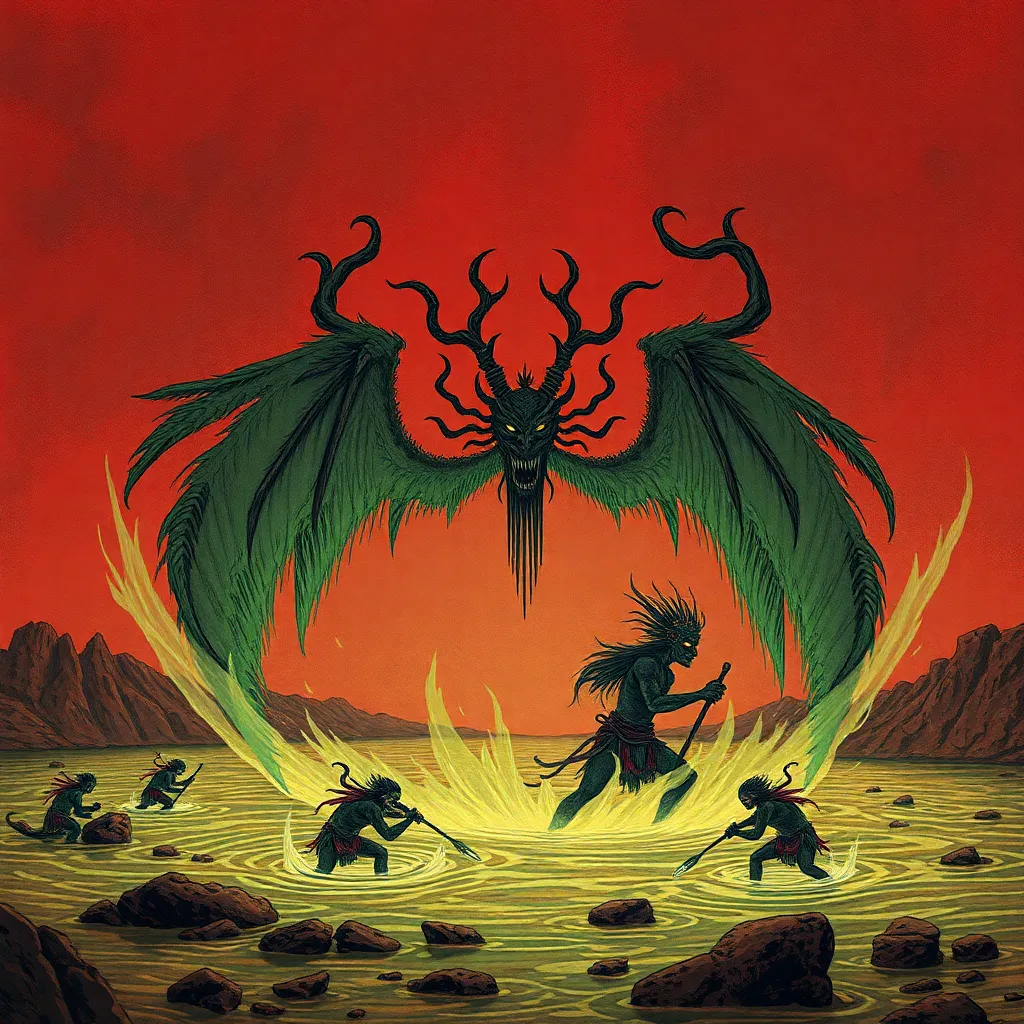The Ahuizotl in Nahuatl Literature: Tales of Terror and River Spirits
I. Introduction
The Ahuizotl is a fascinating figure in Mesoamerican folklore, particularly within the rich tapestry of Nahuatl literature. This creature, often depicted as a fearsome water spirit, has intrigued and terrified those who have heard its tales. The importance of Nahuatl literature cannot be overstated; it plays a crucial role in preserving indigenous narratives that have been passed down through generations. This article aims to explore the Ahuizotl’s role in tales of terror, examining its cultural significance and the broader context of its narratives.
II. Historical Context of Nahuatl Literature
Nahuatl, a language spoken by the Nahua people, boasts a long literary tradition dating back to the pre-Columbian era. This language has served as a vessel for a wealth of narratives, including mythological stories and historical accounts. The influence of both pre-Columbian and colonial narratives has shaped the folklore of the region.
- Origins of Nahuatl Language: Nahuatl has roots that trace back over a thousand years, serving as the lingua franca of various Mesoamerican cultures.
- Influence of Pre-Columbian Narratives: The stories from this period often feature gods, spirits, and creatures that reflect the people’s understanding of the world around them.
- Key Texts: Important texts such as the “Florentine Codex” and the “Codex Mendoza” document these narratives and provide insight into the cultural significance of various mythical beings.
III. Description and Characteristics of the Ahuizotl
The Ahuizotl is described in various accounts as a creature with distinct and terrifying features. Typically, it is depicted as resembling a dog or a large mammal, with a long, pointed snout and a sleek, dark coat.
- Physical Attributes:
- Size: The Ahuizotl is often described as being about the size of a dog.
- Eyes: It is said to have glowing red eyes that strike fear into the hearts of those who encounter it.
- Tail: One of its most distinctive features is its long, flexible tail, which ends in a hand-like structure.
- Behavioral Patterns: The Ahuizotl is known to lurk near bodies of water, particularly rivers and lakes, where it uses its cleverness to lure unsuspecting victims.
- Symbolism: In Nahuatl cosmology, the Ahuizotl symbolizes the fear of the unknown and the dangers associated with water, a vital yet unpredictable element.
IV. Ahuizotl in Nahuatl Folklore and Mythology
The Ahuizotl features prominently in various tales and legends that illustrate its role as a river spirit. These stories often blend fear with reverence, showcasing the duality of nature in Nahuatl belief systems.
- Notable Stories:
- One prevalent legend tells of the Ahuizotl dragging fishermen into the depths of the river, never to be seen again.
- Another story recounts a brave warrior who managed to outsmart the creature, highlighting themes of courage and cleverness.
- Connection to Water: The Ahuizotl is intrinsically linked to bodies of water, embodying both their beauty and danger.
- Themes of Fear and Reverence: The narratives surrounding the Ahuizotl evoke a deep respect for nature’s power and unpredictability.
V. The Ahuizotl as a Symbol of Natural Forces
Interpreting the Ahuizotl within the context of natural forces reveals much about the Nahua worldview. The creature serves as a reminder of the unpredictability of nature and the need for harmony between humans and their environment.
- Nature’s Unpredictability: The Ahuizotl illustrates the potential danger of water, a source of life that can also bring death.
- Human-Environment Relationship: Nahuatl culture emphasizes a deep connection with nature, where respect and fear coexist.
- Lessons and Warnings: Ahuizotl tales often carry messages warning against hubris and the importance of heeding nature’s signs.
VI. Comparative Analysis with Other Mythical Creatures
When comparing the Ahuizotl to other mythical water spirits from around the world, intriguing similarities and differences emerge.
- Similarities:
- Many cultures have water spirits that exhibit cunning and malevolent traits, such as the Scottish Selkie or the Slavic Rusalka.
- These creatures often serve as warnings to humans about the dangers of water.
- Differences:
- While many water spirits are depicted as beautiful or alluring, the Ahuizotl is primarily characterized by its fearsome features.
- The Ahuizotl’s portrayal is deeply embedded in the specific ecological and cultural context of Mesoamerica.
- Unique Position: The Ahuizotl occupies a distinct role within Nahuatl mythology, representing both a spirit of terror and a protector of the waters.
VII. Legacy and Modern Interpretations
The legacy of the Ahuizotl continues to resonate in contemporary culture, reflecting the enduring power of Nahuatl narratives.
- Enduring Presence: The Ahuizotl is often referenced in modern literature, films, and art, showcasing its lasting impact.
- Adaptations: Various adaptations have reinterpreted the Ahuizotl, allowing new audiences to engage with this ancient myth.
- Indigenous Identity: The Ahuizotl serves as a symbol in discussions about indigenous identity and heritage, highlighting the importance of preserving these narratives.
VIII. Conclusion
In conclusion, the Ahuizotl holds a significant place in Nahuatl literature, embodying themes of terror, reverence, and the complex relationship between humans and nature. The exploration of this creature not only sheds light on the rich traditions of Nahuatl storytelling but also emphasizes the importance of preserving indigenous narratives. By understanding the Ahuizotl and its stories, we gain insight into the cultural heritage of the Nahua people and the timeless lessons embedded within their folklore.



